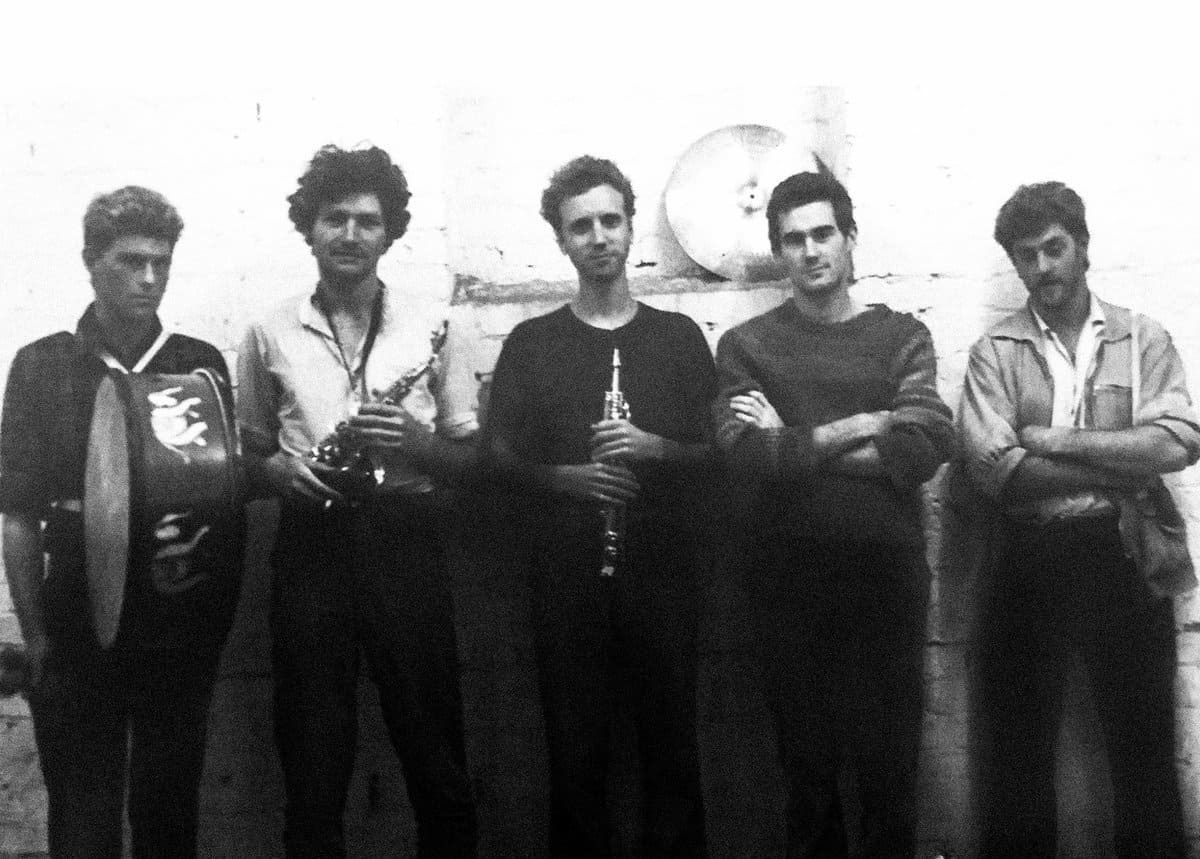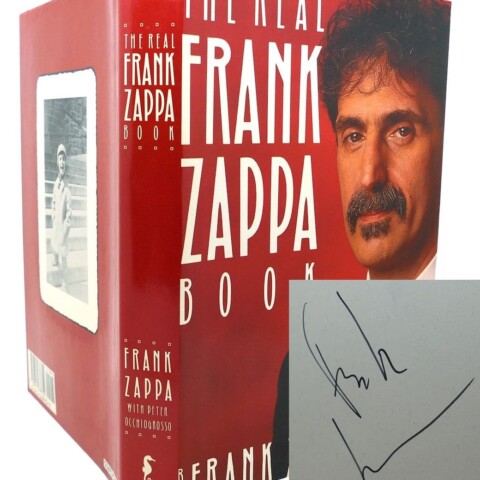Daniel Beban – Future Jaw-Clap (Te Herenga Waka University Press)
GARY STEEL reviews a new book that’s not only the story of an extraordinary band, label and scene, but an alternative history of Wellington in the 1980s.
 When I heard that this chap Daniel Beban had received the Lilburn Research Fellowship to enable the writing of a history of 1980s free music collective Primitive Art Group, its offshoots and the Braille label they created around their activities, I feared the worst. I’d never heard of this fellow but expected him to be some academic nerd whose prose would be both pretentious and lifeless. How wrong could I have been?
When I heard that this chap Daniel Beban had received the Lilburn Research Fellowship to enable the writing of a history of 1980s free music collective Primitive Art Group, its offshoots and the Braille label they created around their activities, I feared the worst. I’d never heard of this fellow but expected him to be some academic nerd whose prose would be both pretentious and lifeless. How wrong could I have been?
On the face of it, the project does seem a bit dry, and I wondered if anyone would really want to read about a group that barely made it out of the undergrowth during its glory years and has been largely forgotten in the nearly 40 years since they disbanded. Or for that matter, the scene they spawned, which punctured the public consciousness for a brief few years with the more accessible, song-oriented Six Volts.
But you know what? Future Jaw-Clap is one of the precious few great books penned about New Zealand music and is a compelling insight on the viral way – sans computers and social media! – that a raggedy bunch of serious young men came together to create something completely unheard of.

For those less interested in the specifics of the music made by this odd aggregation the book also works as a fantastic cultural history of our Capital city in the 1980s, a decade that began with then-Prime Minister Muldoon’s restrictive National government and failing economics and then, improbably, got much worse with the so-called ‘Rogernomics’ of the 1984 Lange Labour government, the results of which continue to reverberate in a negative way today. The Primitive Art Group story though is also the story of Wellington at the time and inevitably, the divisive Springbok tour in ’81 is explained, along with the increased activism of the underground artistic community. Speaking of which, an important chunk of Future Jaw-Clap is its piecing together the interweave between similarly minded visual artists, dancers, and actors, as well as musicians sympathetic to PAG but with different stylistic motivations.
Although it’s tempting to think of New Zealand’s only jazz-influenced free music ensemble as outsiders diligently following their own path – and it’s true that at the beginning their mission to create a new improvised music somewhat set them apart from their contemporaries – it’s also true that as soon as they really began performing publicly from 1981, it became apparent that they had a lot in common with post-punk musicians; that in a sense, they were art-punks.
Sadly, the story of the post-punk Wellington scene is yet to see the light of day, but Beban goes some way by discussing the virtues of the late Shoes This High guitarist Kevin Hawkins (who ended up collaborating with PAG guitarist David Watson) and interviewing George Henderson (Spies, And Band, The Puddle) and the fact that those musicians had been influenced by outsider artists like Captain Beefheart and improvising UK group Henry Cow.
 There undoubtedly was something monastic about the group in its early days that bares comparison to Sun Ra’s famously long rehearsals, but PAG was also learning on the go. Like the punks, the group at the beginning barely knew how to play, and weren’t interested in conventional virtuosity. Unlike the punks, however, they were determined to create their own musical language that was largely free of song form. Beban explains, however, that eventually, key member and main taskmaster Stuart Porter devised a system where some elements of structure could co-exist with the free blowing. That’s when the group really hit on something, and became an astonishing live proposition.
There undoubtedly was something monastic about the group in its early days that bares comparison to Sun Ra’s famously long rehearsals, but PAG was also learning on the go. Like the punks, the group at the beginning barely knew how to play, and weren’t interested in conventional virtuosity. Unlike the punks, however, they were determined to create their own musical language that was largely free of song form. Beban explains, however, that eventually, key member and main taskmaster Stuart Porter devised a system where some elements of structure could co-exist with the free blowing. That’s when the group really hit on something, and became an astonishing live proposition.
Typically, what audiences think of as improvised jazz starts and ends with a song’s melody (a classic example being John Coltrane’s take on ‘My Favourite Things’) with a riff-based exploration in between. PAG remind me more of Henry Threadgill’s Circus, or even some of Ornette Coleman’s later work, where the piece is essentially improvised but there are composed layers at certain points… not necessarily obvious melodies but certain signatures or textures or musical lines. There’s also a lot to be said for the idea that their work was spontaneously composed, in the moment, rather than simply free-blowing.
But Beban’s triumph is in writing a book that digs deeply into this history and the group’s music without overwhelming the reader with details that only musicians could understand or be interested in. This is especially notable because it turns out that the author is a musician himself, a former fanboy of the group and now, someone who continues in his own collaborative work to explore the outer fringes of improvised music. That he was able to find enough distance from his sweet inspiration to write about it with an even hand is somewhat extraordinary.
 As someone who played a peripheral part in this story as a writer and publisher/editor of street publications In Touch and TOM from 1980 to ’85, what amazes me about Future Jaw-Clap is how much I learnt from Beban’s deep digging through the rubble. I’m quoted in the book as saying how boring Wellington was back in the early ‘80s and that in that complete absence something had to grow, but having read the book, I think I was wrong. Yes, PAG had to practically start a scene of genuinely improvised music from scratch in Wellington, at a time when the jazz scene was quite entrenched and conservative. But clearly, the city was in other ways a real artistic melting pot with plenty going on in avant-garde areas, including the electronic explorations coming from Victoria University and some great visual artists and dancers and grass-roots arts organisations. Retrospectively, that’s why I loved Wellington and stayed for 10 years: because it oozed artistic endeavour and the (now sadly ruined by the motorway) area of Upper Cuba St PAG and Braille mostly lived and worked in was a hive of activity and oddball artistry.
As someone who played a peripheral part in this story as a writer and publisher/editor of street publications In Touch and TOM from 1980 to ’85, what amazes me about Future Jaw-Clap is how much I learnt from Beban’s deep digging through the rubble. I’m quoted in the book as saying how boring Wellington was back in the early ‘80s and that in that complete absence something had to grow, but having read the book, I think I was wrong. Yes, PAG had to practically start a scene of genuinely improvised music from scratch in Wellington, at a time when the jazz scene was quite entrenched and conservative. But clearly, the city was in other ways a real artistic melting pot with plenty going on in avant-garde areas, including the electronic explorations coming from Victoria University and some great visual artists and dancers and grass-roots arts organisations. Retrospectively, that’s why I loved Wellington and stayed for 10 years: because it oozed artistic endeavour and the (now sadly ruined by the motorway) area of Upper Cuba St PAG and Braille mostly lived and worked in was a hive of activity and oddball artistry.
I’m glad that Beban wrote so fulsomely about Primitive Art Group and Wellington in the early to mid-’80s before the rot set in. In the second part, he covers the Braille label set up by the group and the various offshoots. A lesser writer/observer might have given pride of space to the most commercially successful ventures, but Future Jaw-Clap aptly and adeptly covers Three Volts/Four Volts/Six Volts and the other Braille label releases without going overboard. There’s simply not as much to say about this busy and productive but less innovative part of the history. What is phenomenal about Six Volts is the sheer number of gigs they played around the country during their glory years, along with other notable events like their participation on Don McGlashan and Harry Sinclair’s classic Songs From The Front Lawn album and eventually, a brief international excursion.
There are ample tidbits of fascinating info in Future Jaw-Clamp for dweebs like me, and I loved having my suspicions confirmed that several Primitive Art Group members were soaking in the European chamber jazz of German label ECM when they formed the group. I think that, in a sense, is why the group never felt like slaves to the African-American heritage of jazz. Influenced, yes, but labels like ECM (which often featured black Americans transplanted to a European context) helped to establish a new stream of part-improvised, part-composed music with a global cultural reach that clearly leached into the group’s collective musical psyche.
But the book is also, to a lesser extent, a personal history and its last pages – which are as compelling as its first – explain what happened to its cast of characters, including a rather shocking addiction admission from Stuart Porter. But the most poignant portrait is of drummer Anthony Donaldson who has often lived an intentionally spartan existence in a tiny bach or on remote farms.
Lastly, I’ve got to mention the book’s production, which is superb. Carefully proofed (I only spotted one small typo), beautifully designed and formatted to make for an easy progression across its relatively brief chapters, the thing is a joy to hold in your hands. (How do people get off on reading Kindle books, anyway?)
If I didn’t (shamefully) know who Daniel Beban was before, I sure do now and will be following his future writing and music projects with interest.
+ Future Jaw-Clap is available from Schrödinger’s Books.











